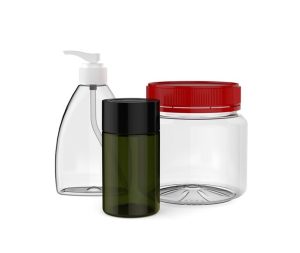PET packaging is a kind of plastic that is very strong and resistant to breakage. It is also an environmentally friendly material that can be used in various ways, including recycling old bottles. It is also safe to use for food contact.
PET bottles are shatterproof
A PET bottle is a shatterproof bottle made of polyethylene terephthalate. It is an excellent packaging material that is recyclable and is a safe way to transport products. It is also a cost-efficient option. For professional PET packaging services, check out pharmapac.co.nz/our-polymers/pet-polyethylene-terephthalate now.
 A lightweight PET bottle is beneficial because it minimizes the product’s carbon footprint and reduces transportation costs. In addition, its ability to be recycled and recycled PET into other goods significantly impacts the environment.
A lightweight PET bottle is beneficial because it minimizes the product’s carbon footprint and reduces transportation costs. In addition, its ability to be recycled and recycled PET into other goods significantly impacts the environment.
The advantages of PET bottles include a high degree of strength, low moisture absorption, resistance to attack by microorganisms, and a clear finish. In addition, it is a recyclable plastic that can be recollected and recycled into new products like glass.
PET has been used for packaging beverage containers for decades. Various studies have been conducted on the materials, with no adverse developmental effects found in test animals.
They are safe for food contact.
If you’re looking for an inert, sturdy, and safe packaging material for your food, you may want to consider PET. This type of plastic is highly resistant to bacteria, moulds, and fungi, making it ideal for long-term storage.
Food-grade PET products include single-serve beverage bottles, condiment bottles, and other containers. It’s also commonly used to package salad dressings and peanut butter.
It is non-corrosive and has excellent impact resistance. The resin also resists microorganisms. Unlike other plastics, recycled PET is FDA-approved for food contact applications.
Its high melting point makes it suitable for use in microwave ovens. Additionally, it is resistant to acidic foods, making it ideal for storing and transporting beverages.
It’s also weather-resistant and reusable. As a result, HDPE is the most common plastic in household use. It’s also used in thicker food storage buckets and cereal box liners. For professional PET packaging services, check out pharmapac.co.nz/our-polymers/pet-polyethylene-terephthalate now.
They are recyclable
The plastics industry has been around for ages, so it’s not surprising that consumers embrace the latest and greatest. For instance, California’s most recent COVID (Competitive Video Game Industry Day) saw an exponential spike in demand for take-out containers.
There are many reasons to consider PET your following go-to material for all your packaging needs, including its versatility. It’s light, strong, and, most importantly, recyclable. Furthermore, using recycled materials reduces the amount of food packaging that finds its way to landfills.
The market for PET is expected to grow at a healthy rate. The industry is estimated to be worth nearly a billion dollars by 2021. The competition between suppliers is fierce, but manufacturers are betting on a savvy consumer base that is increasingly aware of the environmental impact of their purchase choices. For example, a company called Direct Pack, Inc. buys reclaimed PET plastic and converts it into an entirely new type of food packaging.
They contain no Bisphenol A
If you’ve been using plastic water bottles for a while, you’re probably familiar with PET, the polyethylene terephthalate commonly used in single-serve bottled water containers. Unlike BPA, PET does not leach any chemicals into the water. As a result, the FDA has approved PET as safe for food contact.
But did you know that there are many other products to which you may be exposed to Bisphenol A? For example, this chemical is used to make epoxy resins and other products, such as baby bottles. It is also found in dental sealants, metal products, and the lining of canned foods.
As the consumer community learns more about the harmful effects of BPA, more companies are replacing their products with BPA-free alternatives. However, some scientists are still concerned about the potential health risks of this synthetic compound. They say that even small amounts of BPA can affect the body’s functions. They also say that children’s bodies are more susceptible to chemical effects than adults.
What Is PET Packaging?
PET packaging is a type of plastic that is used in a wide range of applications. It is a lightweight material that is highly durable. In addition, it is recyclable and offers good barrier properties. Among its many uses, PET is most often used in food and beverage packaging.PET is a crystalline polymer that is made from purified terephthalic acid. Its properties make it a popular plastic. It is also one of the most commonly recycled plastics in the United States.
PET can be shaped into a large variety of designs. Unlike glass, PET bottles have a high strength-to-weight ratio. It is also shatterproof. Moreover, it has excellent clarity, sparkle, and impact resistance. For professional PET packaging services, check out pharmapac.co.nz/our-polymers/pet-polyethylene-terephthalate now.